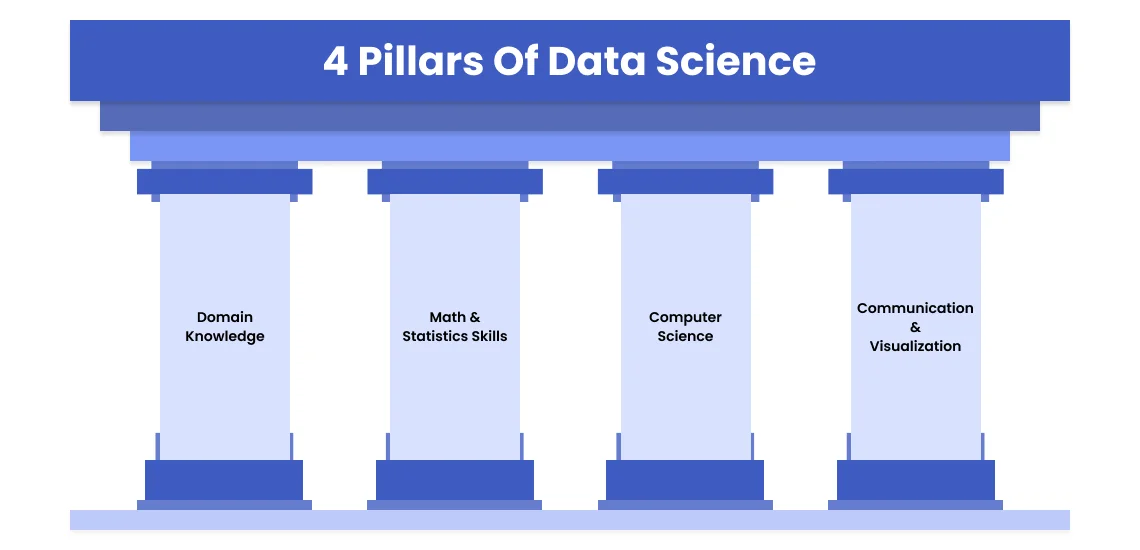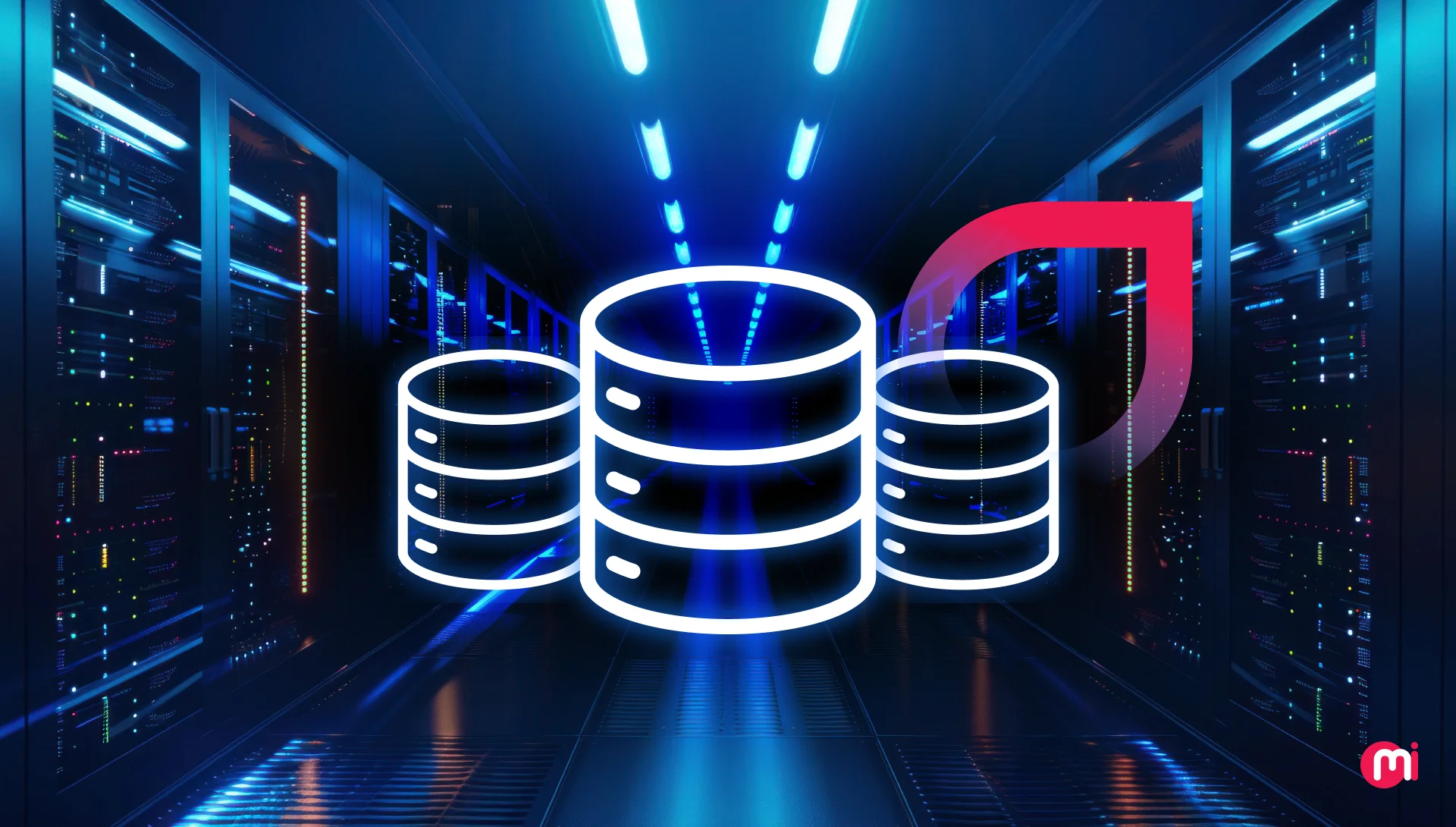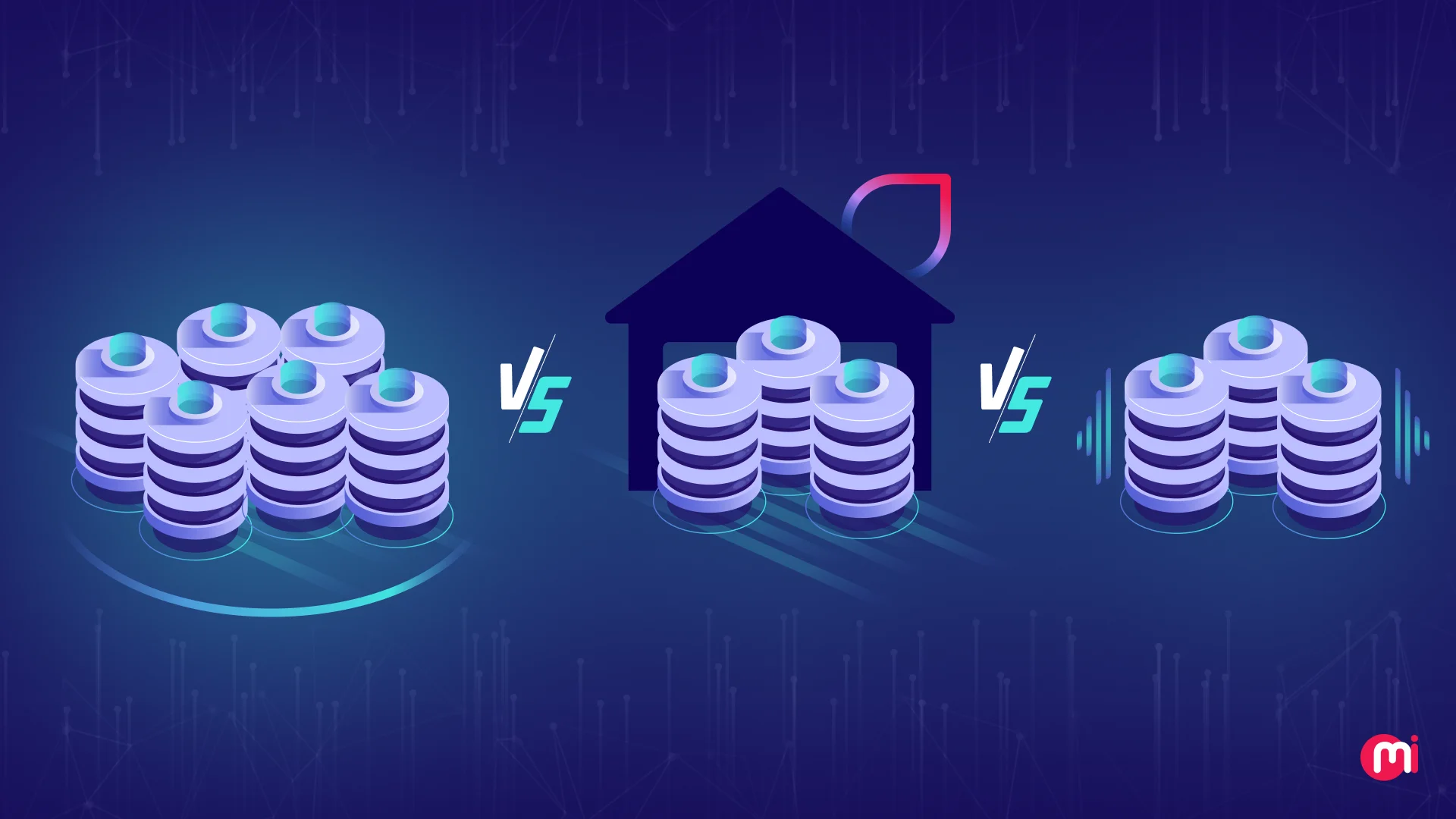How Data Science Can Drive Informed Decision-Making in Your Organization?
- Data
- January 12, 2024
In this internet world where data is the biggest treasure any business can hold. This also makes it important to learn the effective ways data can be leveraged. Amongst many, Data Science can bring up an effective data-driven solution. Read this blog to dive deeper into the realm of data science and the roles of data science in facilitating better data-driven decision-making.
Imagine being able to make decisions that are not just based on intuition or guesswork but on solid evidence and data-driven insights. Now, you can do it by using the vast amounts of data that are generated internally through various sources, for example, data retrieved from machines or production lines in general. The data derived from all these sources can be turned into actionable insights.
However, the challenge lies in extracting and harnessing that potential issue, though with the help of data science, the task becomes easy to execute for organizations, businesses, and individuals. In this blog, we will discuss how data analysis, machine learning, and predictive modeling can empower your organization, regardless of its size or industry, and help you make smarter and more data-backed decisions.
What is Data Science?
Data science is the practice of transforming raw data into meaningful information by using techniques like data cleaning, statistical modeling, and machine learning, enabling organizations to derive actionable insights and solve complex problems.

It involves the use of various techniques, algorithms, processes, and systems to extract insights and knowledge from structured, semi-structured and unstructured data. It combines aspects of data science statistics, computer science, mathematics, and domain expertise to analyze, interpret, and make predictions or decisions based on data.
Also read: The Important Elements of the Digital Transformation Before its Implementation
The Role of Data Science in Facilitating Decision-Making
Data science serves as a guiding force, helping decision-makers improve daily operations and plan for the future. It empowers leaders to navigate current challenges and shape a strategic and data-driven future. Here is a breakdown of its important role in business decision-making.
Data Exploration and Analysis for Decision-Making
Algorithms start the process by gathering relevant data from various sources, including website interactions, sales records, customer preferences, payment transactions, surveys, and other sources. With the help of data science techniques, businesses collect this data and work on it. Data scientists explore the data to study and recognize patterns, trends, and relationships, offering valuable information to help with strategic decision-making.
Usually, raw data has errors, missing values, and inconsistencies that need to be eliminated. Otherwise, the decision-making with data science is not accurate and reliable. Data scientists clean and process this data to make it more useful. The process involves tasks like handling missing values, eradicating outliers, and standardizing data formats.
Predictive Analytics & Forecasting
Predictive Analytics models are a type of data analytics that use historical data and statistical algorithms to predict future outcomes. These models analyze patterns, trends, and relationships within the data to tell what is likely to happen in the future.
There are several types of predictive analytics models that work differently and help with decision-making for various tasks. The most important ones are:
Classification Model
The model puts the new data in the class or category it belongs to. The common classification models include logistic regression, decision trees, support vector machines, and neural networks. These models are best for making single-answer predictions, like yes or no questions. For example:
- Is the financial transaction fraudulent or not?
- Does the patient have a specific medical condition?
- Is the email spam or not?
- Which segment does the customer belong to?
- Is the customer’s review positive, negative, or neutral?
These questions showcase the versatility of classification predictive analytics mode in various domains. They support in making business decisions, improving healthcare outcomes, or enhancing fraud prevention. These models play a crucial role in providing actionable insights based on categorized predictions.
Businesses can implement the model in healthcare for diagnosing diseases based on medical images, finance can use it to assess credit scores and risk associated with lending, marketing firms can use it to tailor strategies, and retail can take its help to know the customer preferences.
However, its use cases don’t end with these four industries. They are wide and varied and distributed amongst almost all leading industries.
Clustering Model
The model helps with data segregation or separation. It analyzes attributes and sorts data in smart groups according to their attributes, characteristics, or features. Clustering at acknowledging inherent patterns or relationships within the data without predefined labels.
Usually, there are four types of main clustering algorithms used to handle unique data. These algorithms are: Density-based, Distribution-based, Centroid-based, Hierarchical-based.
Organizations use the clustering model to gain insights into the natural structure of the data, which is valuable for various purposes. These models do not have predefined categories; instead, they discover patterns in the data. Clustering is unsupervised and doesn’t need labeled data for training.
The model identifies patterns solely based on the inherent structure of the data. Organizations use the model to keep customers with similar buying patterns to understand the target audience and plan marketing strategies to give personalized offerings. It also detects unusual patterns or outliers in data, identifying potential fraud or irregularities.
Along with it, organizations can use the model for various other purposes, such as:
- Customer segmentation
- Risk mitigation
- Product recommendations
- Supply chain optimization
- Employee performance tracking
- Healthcare patient segmentation
- Network security
- Content recommendations
- Demographics identification
Forecasting Model
This type of predictive model is useful for organizations willing to anticipate future outcomes, plan resource allocation, and make informed decisions. Forecasting models leverage statistical methods and machine learning algorithms to analyze historical data and project future trends.
These models work with time series data, where observations are collected over time intervals. They are trained using historical data up to a certain point, and their accuracy is tested by comparing predictions to actual values for a subsequent period.
They consider time-related features, seasonality, and other relevant variables to capture the underlying patterns in the time series data. Organizations take the support of forecasting model for:
- Planning inventory, production, and marketing strategies
- Defining budget, investment, and financial management strategies
- Optimizing production, reducing stockouts, and improving customer satisfaction
- Anticipating demand and operational requirements
- Keeping a tab on energy consumption, peak usage and management costs
- Evaluating the effectiveness of marketing initiatives and adjusting strategies accordingly
Outliers Model
The Outliers Model is designed to recognize unusual or anomalous patterns within a dataset. Outliers are data points that deviate from the main data, substantially from the majority of the observations, either being significantly higher or lower. These exceptional values can suggest inconsistencies in measurements, errors in experimentation, or the presence of unique and unusual occurrences.
The model leverages common algorithms, like statistical methods, machine learning techniques, and deep learning models. It follows unsupervised learning patterns and doesn’t demand labeled data with predefined outliers for training.
It supports organizations in detecting:
- Unusual patterns
- Anomalies
- Equipment failures
- Unexpected purchasing patterns
- Suspicious activities
- Irregular credit behavior
- Abnormal energy consumption patterns
Time Series Model
These models are specifically designed to analyze and make predictions based on time-ordered data points. Time series data is a sequence of observations recorded over some time, and time series modeling involves capturing the temporal dependencies and patterns within this data. It considers three main components: trend, seasonality, and residuals.
- Organizations use Time Series Models to –
- Forecast future demands
- Understand trends
- Analyze and predict future values
- Forecast future sales
- Predict energy consumption patterns
- Optimize inventory levels

Optimization & Resource Allocation
One of the prime benefits of data science for business is resource optimization and resource allocation. It provides actionable insights, identifies areas for improvement, allocates resources, and helps organizations make informed decisions. So they can achieve their strategic objectives and enhance performance and competitiveness.
Data offers insights into the current utilization of resources, including machinery, manpower, and facilities. With this advancement, organizations can identify inefficiencies, bottlenecks, and underutilized assets, enabling optimization and better allocation of resources.
Descriptive Analytics
Descriptive Analytics begins with exploring and understanding the structure of the data. It examines the dataset’s size, data types, and the distribution of values lying within each feature. Descriptive statistics, such as mean, median, mode, standard deviation, and percentiles, are computed to summarize the central tendencies and variability of numerical data.
It employs visualization techniques like charts, graphs, and plots to find patterns, trends, outliers, strengths, weaknesses, and areas for improvement. By analyzing historical data, companies can review their past performance in various areas, such as sales, customer engagement, and operational efficiency to make informed decisions or capitalize on identified trends, enhancing strategic planning and execution.
Handling and Processing Large Datasets
Handling and processing large datasets is also known as big data analytics. It studies large and complex datasets that are challenging to process and analyze using traditional data management and processing tools. Big data has the capacity to work with massive volumes of data comprising terabytes, petabytes, or even exabytes of information.
Big data analytics process the data to extract reliable insights, patterns, and trends from these large datasets to support decision-making, business intelligence, and scientific research. Its insights are usually derived using advanced analytics and machine learning algorithms that provide a data-driven understanding of various aspects of the business.

Why MindInventory Stands Out as Your Preferred Data Analysis Partner?
The impact of data science extends to every facet of an organization. Human resources benefit from talent analytics, finance gains sharper insights for budgeting and investment, marketing crafts personalized campaigns, and supply chains operate with unprecedented precision. Moreover, the ability to glean actionable insights from data not only enhances the efficiency of day-to-day operations but also fosters innovation, agility, and a competitive edge.
MindInventory is a reliable digital transformation partner that supports full-fledged innovation. Our data science solutions have empowered businesses across healthcare, finance, e-commerce, and beyond. We understand industry challenges and deliver tailored data science solutions that yield tangible results.
You can hire data scientists equipped with unparalleled expertise, skill set, and problem solving abilities. From predictive analytics to machine learning, our professionals are adept at transforming raw data into actionable insights tailored to your unique business needs.
At MindInventory, we don’t just analyze data; we drive informed decision-making. We improve your strategic initiatives, optimize operations, and help you gain a competitive edge through data-driven insights that truly make a difference.
FAQs on Data Science
Data-driven decision-making is a strategic approach that empowers organizations to make informed choices by leveraging empirical data and analytics. By relying on factual insights rather than intuition, businesses can accurately assess their current state, identify trends, and uncover opportunities for improvement and growth.
Data science profoundly impacts functionality and enables continuous performance by refining algorithms, enhancing language understanding, and ensuring adaptability to evolving user needs. Moreover, it also helps with quality assurance, identifies and addresses biases, ensuring ethical consideration and excellent user experience.
Through advanced analytics and machine learning, data science will drive innovation in various industries and businesses, facilitating personalized experiences and predictive analyses. In business, it will optimize operations, enhance decision-making, and fuel the development of new products and services.













